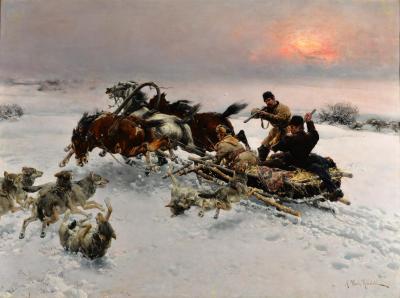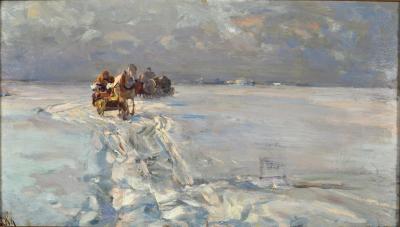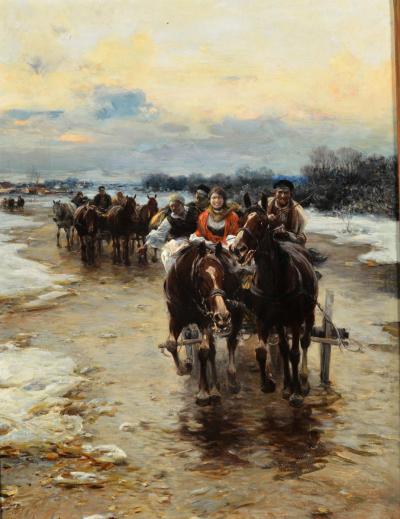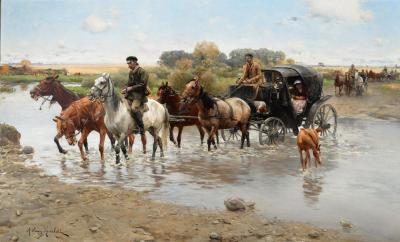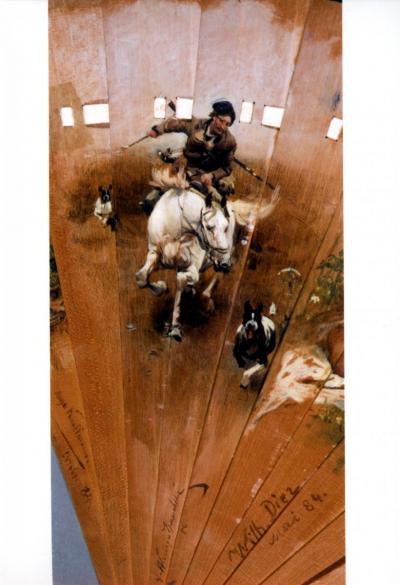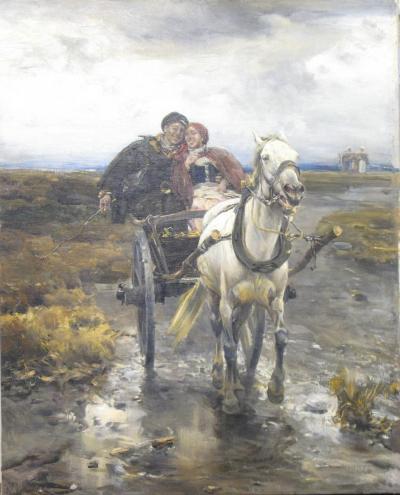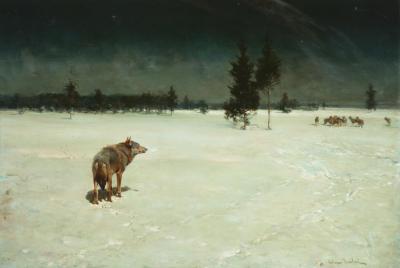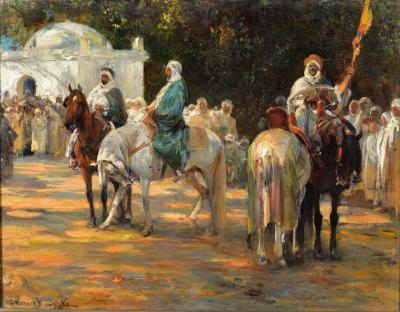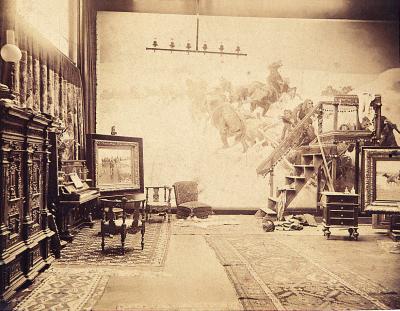Alfred Wierusz-Kowalski
Mediathek Sorted

At the start of the 1980s Wierusz-Kowalski’s pictures began to feature winter scenes with huntsmen setting out with their dogs, coaches and sleighs on snow-covered paths, not to speak of aggressive wolves. During this time he completed the paintings Wyprawa na niedźwiedzia [Bear Hunt] (Ill. 19) and Napad wilków (Attacked by Wolves, Ill. 20).[24] Although these subjects were not the main motifs in his work they made the artist hugely famous.[25] Above all his paintings are associated with dramatic attacks by wolves, whereas the pictures are neither cruel nor shocking since they neither show blood nor death.
Alfred Wierusz-Kowalski was a master at painting snow (Ill. 21, 22). In his paintings it ripples in many nuances on a frosty morning, takes on a purple glow in the light of the setting sun, whereas it breaks up under the hooves of horses during cloudy days of thaw when the grey skies are mirrored in the drops of water. In other pictures white powdery snow gently covers the hillsides or lies heavy on the branches of bushes. Light reflections alternate with deep shadows, there are contrasts between warm and cool tones, and also special techniques like harsh glaring colours, pasty applications and the generous sweep of the freely led brush: styles that the artist used in order to catch the uneven texture of the snow reacting sensitively to every change in temperature and the movement of the wind.
Alfred Wierusz-Kowalski’s typical painting characteristics began to set in at the start of the 1880s. His favourite themes drew on Polish customs and landscapes. Most of the scenes he portrays are set in villages, and a few in small towns. Here the emphasis is not so much on the work and toil of everyday life but rather on the leisure activities of the rural aristocracy: hunting expeditions, people returning from fairs and sleigh rides, and always in movement, in different weather conditions, times of day and seasons of the year. His protagonists seem to float in an interim time and space, free from the duties and burdens of everyday life.
The artist placed large groups of figures in the foreground, mostly dynamic and set in powerfully short perspectives in diagonally running compositions. Other figures often appeared in the background, as recognisable variations to the main group (say, another sleigh ride, or a horse and cart with villagers), in order to emphasise the depths of the motif and sharpen the viewer’s subjective perceptions of time and space. His range of colours was harmonically restricted to fine tonal gradations. The cleverly placed light reflections and colourful accentuations on the surface of the pictures drew the attention of viewers. The portraits were boisterous, full of energy and power, or – quite by contrast – extremely atmospheric and subdued (Ill. 23, 24).
[24] Wyprawa na niedźwiedzia, pre-1889, oil on canvas, 102 x 73 cm. Private collection. Napad wilków, 1885–1890, oil on canvas, 110 x 150 cm. Private collection.
[25] The painting Rabuś [The Lone Wolf] enjoyed great popularity in North America. It shows a single animal in a snowy landscape. Much later the motif was introduced into Pop culture and reproduced on T-Shirts, caps, mugs and similar advertising goods.

















































































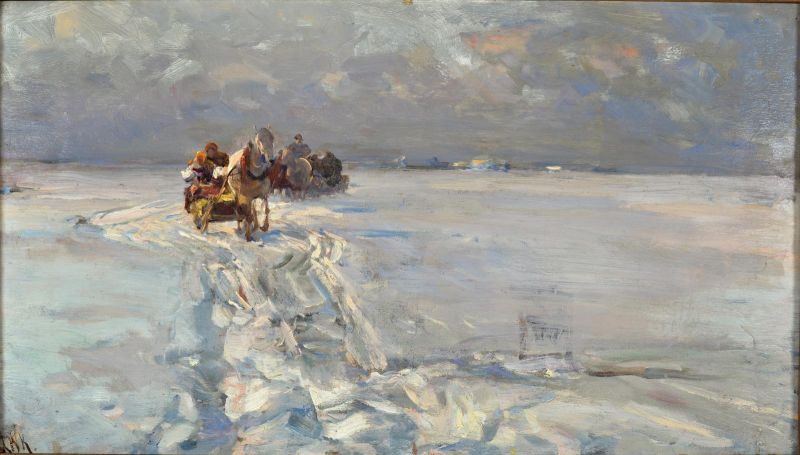
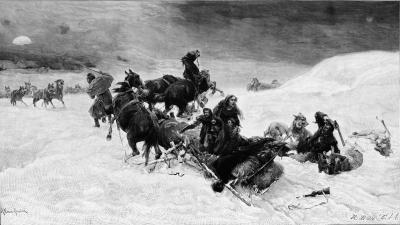
![Abb. 2 Abb. 2 - Widok Suwałk od strony Augustowa [Ansicht von Suwałki von Augustów gesehen], Lithographie von Alojzy Misierowicz, Album Augustowskie, 1855](/sites/default/files/styles/width_100_tiles/public/assets/images/2._widok_suwalk.jpg?itok=cW90QpH5)
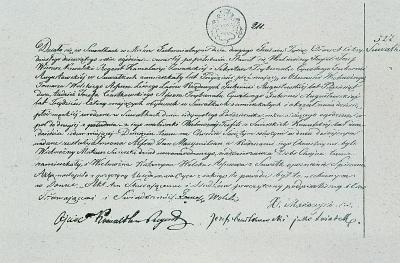
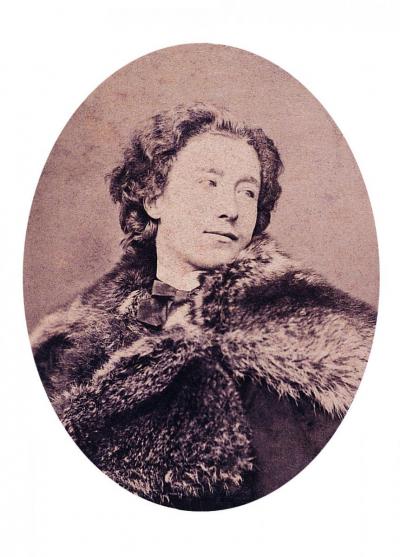
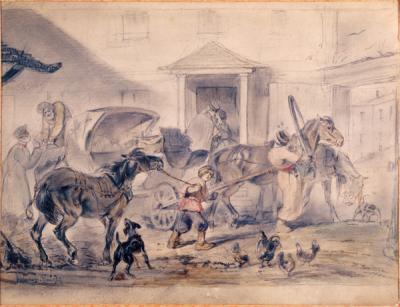
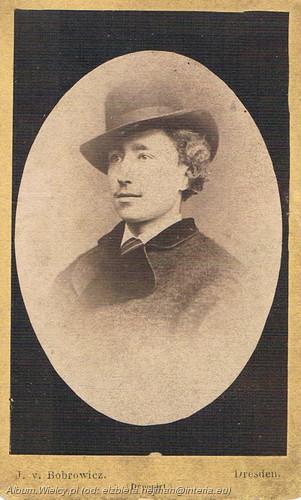
![Abb. 7 Abb. 7 - Dziewczynka z fiołkami [Mädchen mit Veilchen], 1873, Öl auf Leinwand, 50 x 38 cm](/sites/default/files/styles/width_100_tiles/public/assets/images/7._dziewczynka_z_fiolkami_1873.jpg?itok=nBTeOkwF)
![Abb. 8 Abb. 8 - Powrót kwestarza [Die Rückkehr des Gabensammlers], 1873, Öl auf Leinwand, 42 x 65,8 cm](/sites/default/files/styles/width_100_tiles/public/assets/images/8._powrot_kwestarza_freigestellt.jpg?itok=3GHBbJc1)
![Abb. 9 Abb. 9 - Zaloty [Liebeswerbungen], 1875–1877, Öl auf Leinwand, 50 x 42 cm](/sites/default/files/styles/width_100_tiles/public/assets/images/9._zaloty_1875-7_ok._50x42_cm.jpg?itok=rgpvJS6p)
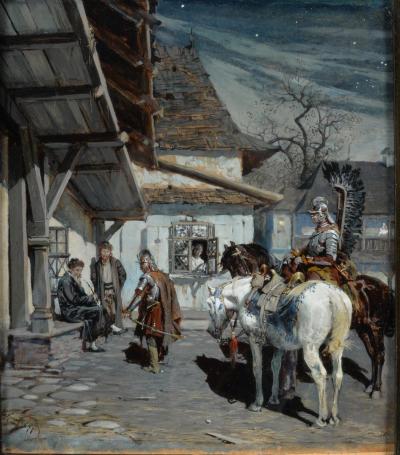
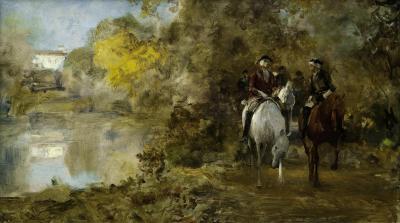
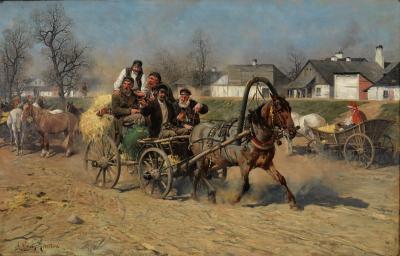
![Abb. 13 Abb. 13 - Wypadek w podróży [Reisemalheur], 1873, Öl auf Leinwand, 56,5 x 101 cm](/sites/default/files/styles/width_100_tiles/public/assets/images/13_wypadek_w_podrozy_freigestellt.jpg?itok=RjSzDhMo)
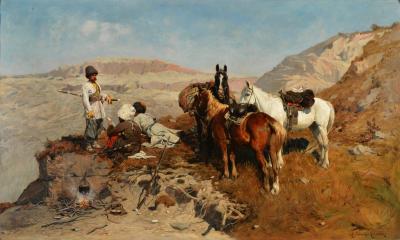
![Abb. 15 Abb. 15 - Postój powstańca [Rast eines Aufständischen], Öl auf Holz, 20 x 35 cm](/sites/default/files/styles/width_100_tiles/public/assets/images/15._postoj_powstanca_freigestellt.jpg?itok=4CUo6v0d)
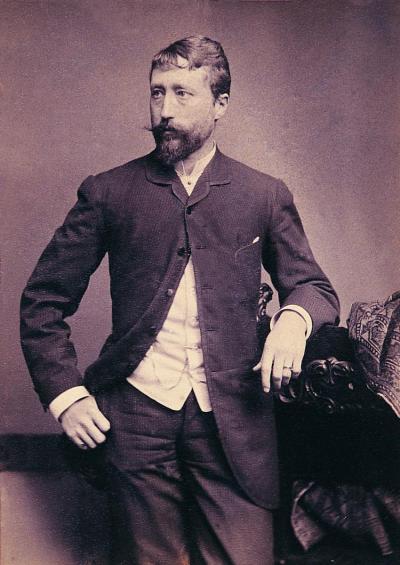
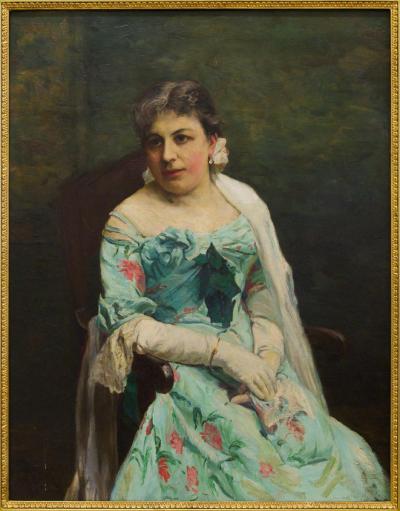
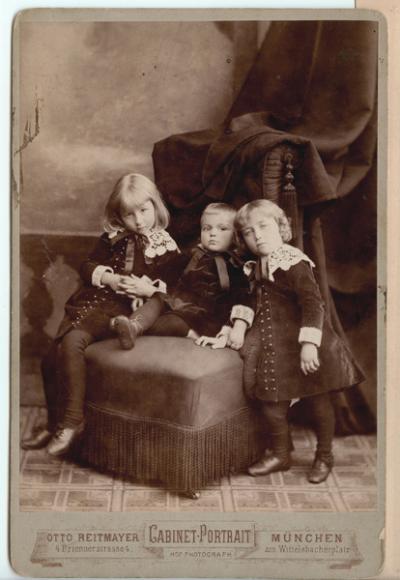
![Abb. 19 Abb. 19 - Wyprawa na niedźwiedzia [Bärenjagd], vor 1889, Öl auf Leinwand, 102 x 73 cm](/sites/default/files/styles/width_100_tiles/public/assets/images/19._wyprawa_na_niedzwiedzia.jpg?itok=XZWS2Zcy)
